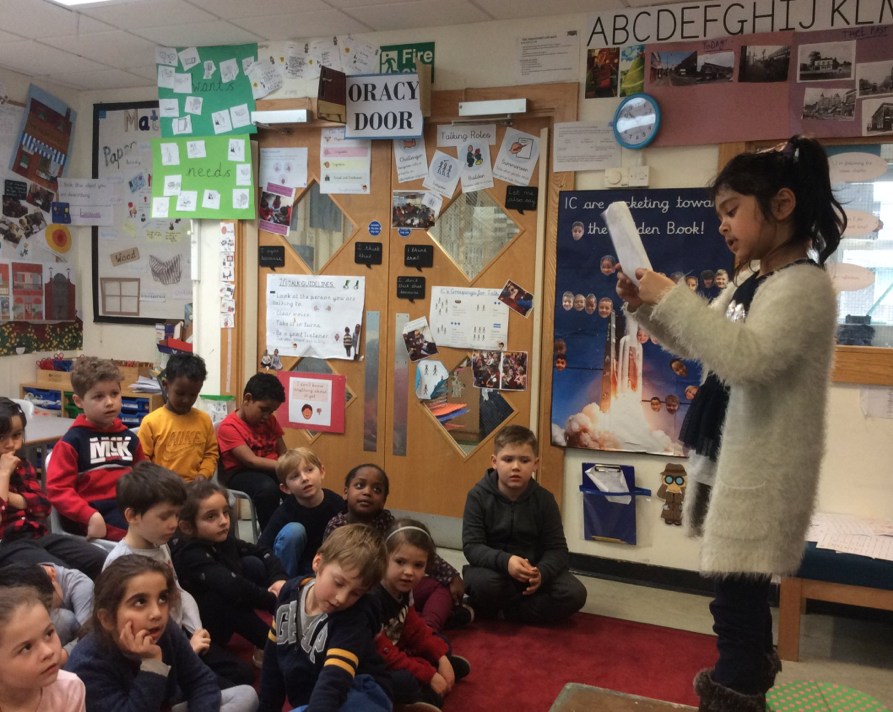From Juliet to Julius Caesar, the words Shakespeare wrote on the page over 450 years ago have undoubtedly stood the test of time, yet they are also considered intimidating texts to many.
Through oracy, we can bring the words of this revered playwright to life, whilst also providing a perfect context for students to use their voices and hone their oracy skills.

Bringing Shakespearean language to life
On the page, Shakespearean language can look alien to students (and even many adults) but read aloud, Shakespeare’s clever use of rhyme, rhythm (or metre) and punctuation bring the words to life. In fact, watching and performing Shakespeare is an excellent way to develop students’ knowledge and understanding of the Oracy Framework.
Before exploring the language used by Shakespeare’s characters (the linguistic strand), focus on the physical and social & emotional strands: can you tell how the characters are feeling from the way they speak and move? How do you think Shakespeare wanted the audience to feel at this moment? In this week’s secondary focused oracy home learning challenge, students are asked to do just this, comparing and contrasting clips of two speeches – Shylock in the Merchant of Venice and Viola in Twelfth Night.
For younger students, you could use these clips of Michael Rosen reciting short speeches from Richard III and The Tempest as a stimulus to discuss how the characters are feeling, before considering what it is they are saying and how this is expressed.This could be a great jumping off point for a discussion about the changing nature of language – why did people in Shakespeare’s time speak differently to us?
Have fun with Shakespearean language by asking students to consider what could have been meant by a selection of these insults – your brain is as dry as the remainder biscuit after voyage (As You Like It – Act 2, Scene 7), for example, before encouraging students to perform them, considering how each insult may have been delivered.
Speeches in Shakespeares’s plays
Shakespeare’s plays are full of eloquent and inspiring speeches, many of which have a purpose beyond simply entertaining the audience.
If you are planning to teach your students speechmaking, why not include a Shakespearean speech alongside contemporary ones as an interesting example to analyse? Understanding that Shakespeare made deliberate choices about the structure and style of his speeches, using blank verse for more comedic characters but returning to iambic pentameter for principal characters at important moments in the plot, for example, is a useful prompt for students to consider their key messages and how these are presented when crafting their own speeches.
Deepening students’ understanding of plot
Oracy is also an excellent tool for deepening students’ understanding of plot in Shakespeare’s plays. Year 1 teachers at School 21 in Stratford, East London learnt a simplified version of A Midsummer Night’s Dream by heart and retold it to students (much to their delight!). Students then story mapped the key moments, retelling the story in small groups before eventually giving an independent performance. You can see one 5 year-old’s performance here.
Discussion is also an excellent tool to further develop students’ understanding of plot. Talking points, controversial, thought-provoking statements, can be a great way to stimulate discussion around a text, encouraging students to apply their knowledge and understanding of the plot whilst also listening to differing viewpoints before reaching a consensus.
Below are some example talking points you could use when studying Macbeth
Don’t forget to provide your students with sentence stems or key language to scaffold their discussions where necessary. You could consider introducing some of Voice 21’s Talk Tactics to elevate the quality of discussion, for example.
We hope you enjoy using the ideas in this blog to bring Shakespeare to life for your students. After all, all the world’s a stage!
Let us know how you get on using oracy as a means to explore Shakespeare’s works by sharing your ideas with us on Twitter #gettalkinginclass
Looking to prioritise oracy teaching and learning at your school? Become a Voice 21 Oracy School today! Find out more here

This article was written by Emma Coffey, Programmes Manager and Catherine Pass, Voice 21 Oracy Consultant, who both support our Voice 21 Oracy Schools to transform their teaching and learning and achieve a high-quality oracy education. You can meet our whole team here.
© 2022 Voice 21. Voice 21 is a registered charity in England and Wales. Charity number 1152672 | Company no. 08165798